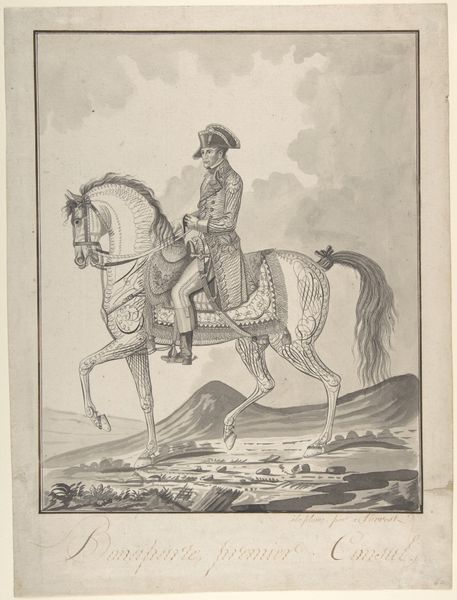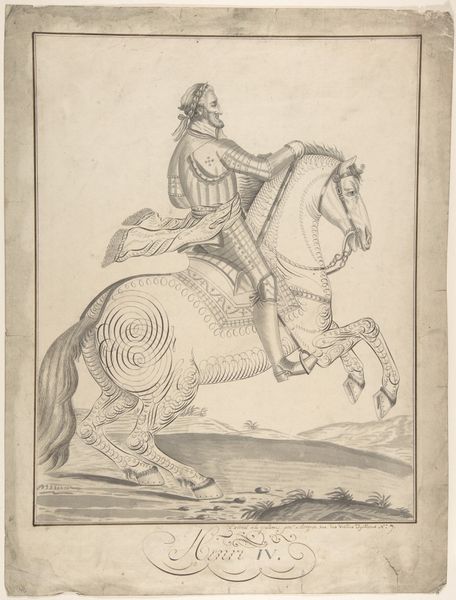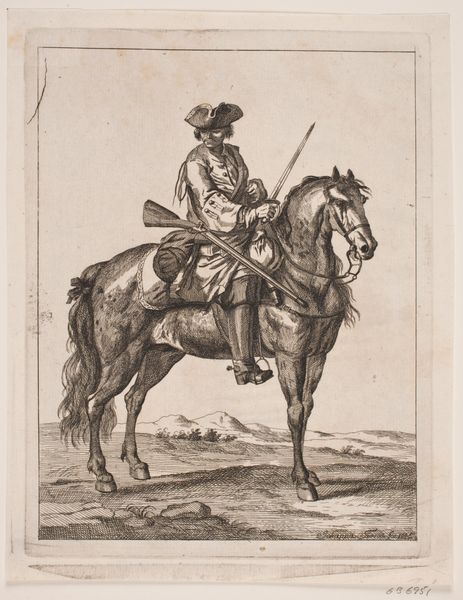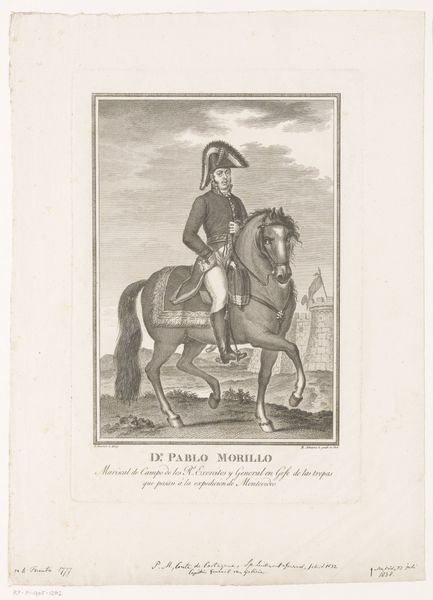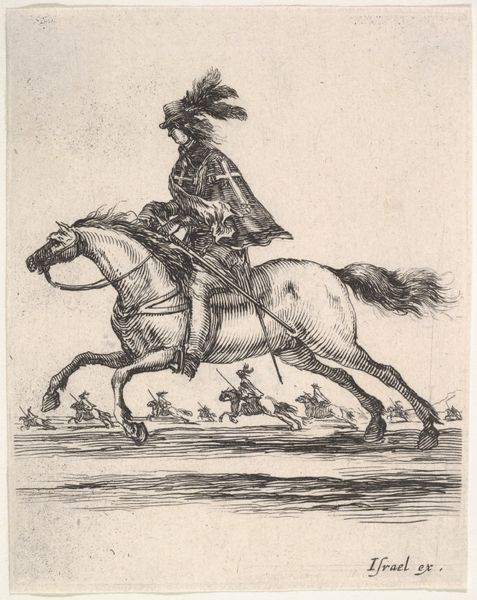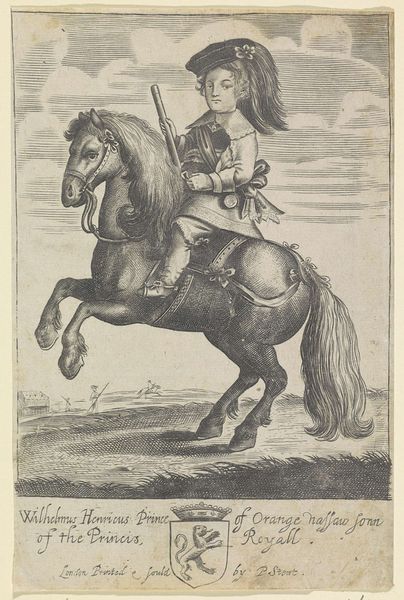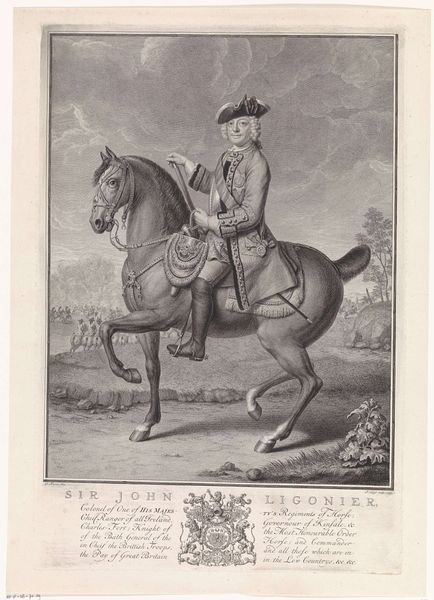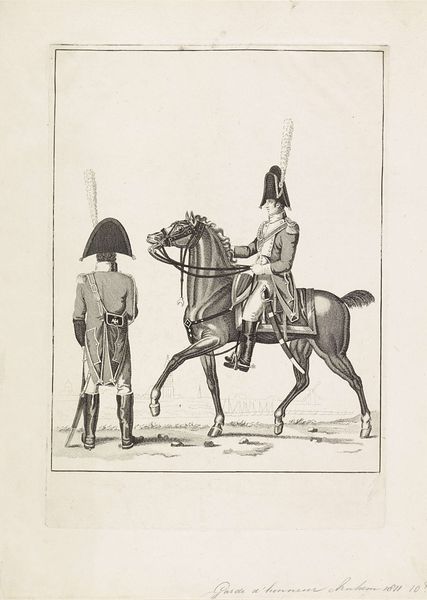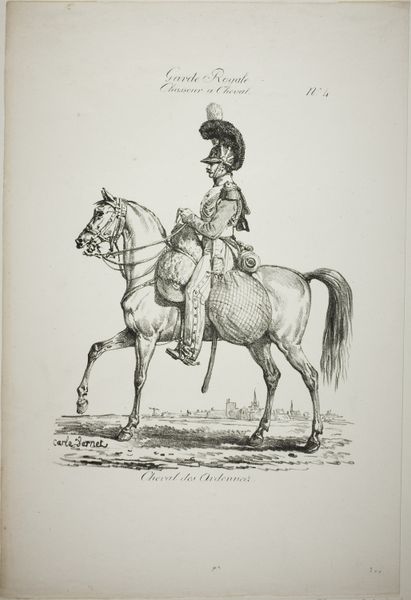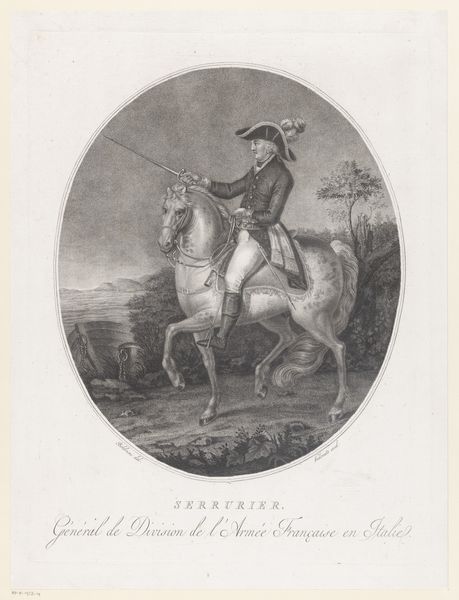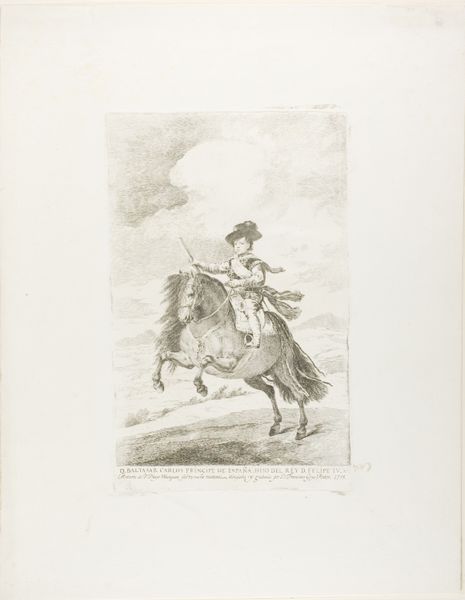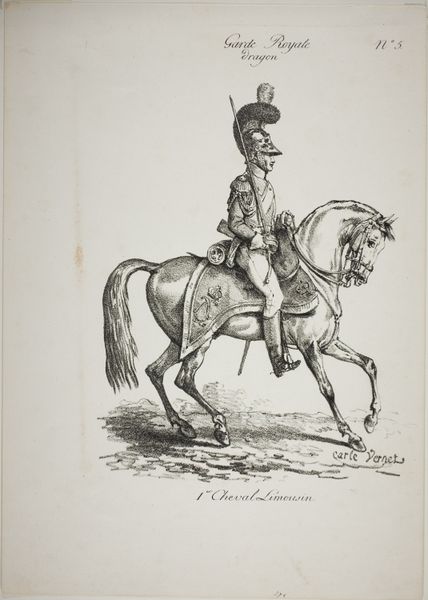
drawing, print
#
portrait
#
drawing
#
toned paper
#
light pencil work
# print
#
pencil sketch
#
personal sketchbook
#
ink drawing experimentation
#
pen-ink sketch
#
horse
#
sketchbook drawing
#
pencil work
#
watercolour illustration
#
watercolor
Dimensions: 16 1/4 x 12 5/16in. (41.2 x 31.3cm)
Copyright: Public Domain
Editor: Here we have "Equestrian Portrait of Napoleon," dating sometime between 1775 and 1825. It appears to be a print, maybe a drawing, displayed at the Metropolitan Museum of Art. I'm immediately drawn to the almost dreamlike quality of the scene. It feels both grand and ethereal. What symbols do you see at play in this work? Curator: An equestrian portrait, especially of Napoleon, is rife with symbolism. The horse itself has always been a signifier of power, nobility, control, and virility. Notice the decorative swirls. Where have we seen that motif repeated throughout history? Editor: You're right, it feels like a conscious visual echo. And Napoleon is positioned almost like a classical god. Curator: Precisely! This work evokes classical ideals, connecting Napoleon to a lineage of great leaders and conquerors throughout time. Think about what that meant in revolutionary France, connecting new power to the Roman Empire, a return to order after chaos. Editor: So it's building a carefully constructed image of Napoleon, both literally and figuratively. The print medium suggests wider circulation and propagation of these values, right? Curator: Exactly. Prints were a democratic way to disseminate imagery. Consider how Napoleon used visual imagery, his personal brand, to cultivate public opinion. It’s psychological as much as it is political. Is he simply a figure of history or is there more being transmitted to his admirers through symbolism? Editor: I never thought about the political ramifications of prints depicting authority. Looking at this now, it appears to create continuity, legitimizing rule by associating the ruler to icons from the past. Curator: Yes! And even suggesting something timeless and unchanging. These symbols really are like echoes across history, reinforcing power.
Comments
No comments
Be the first to comment and join the conversation on the ultimate creative platform.
